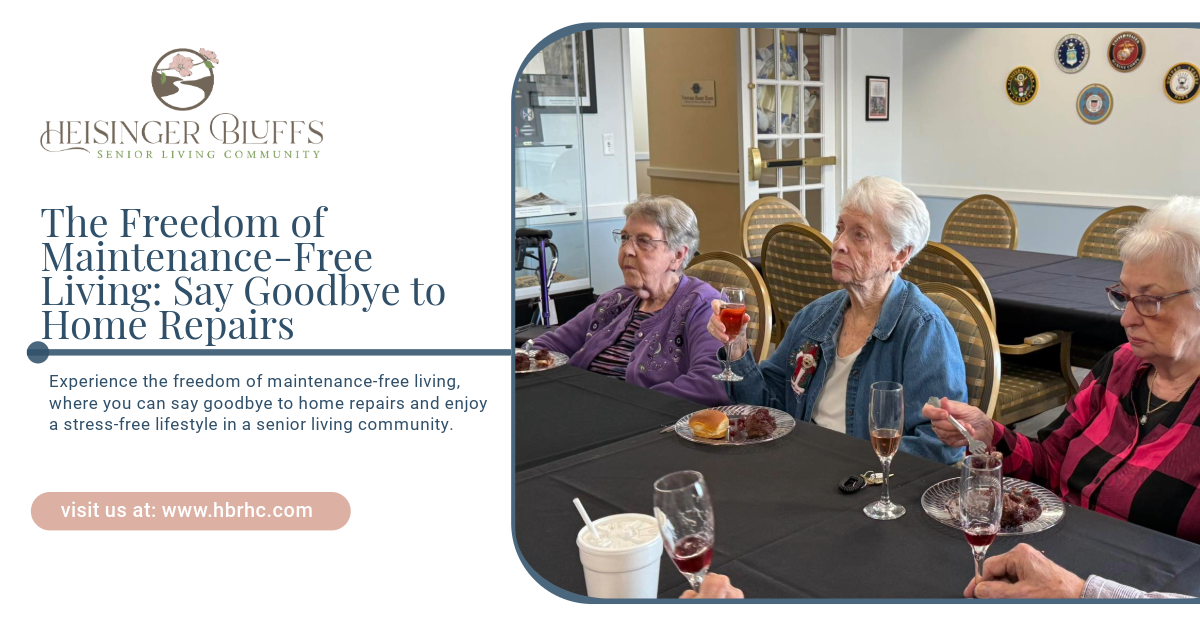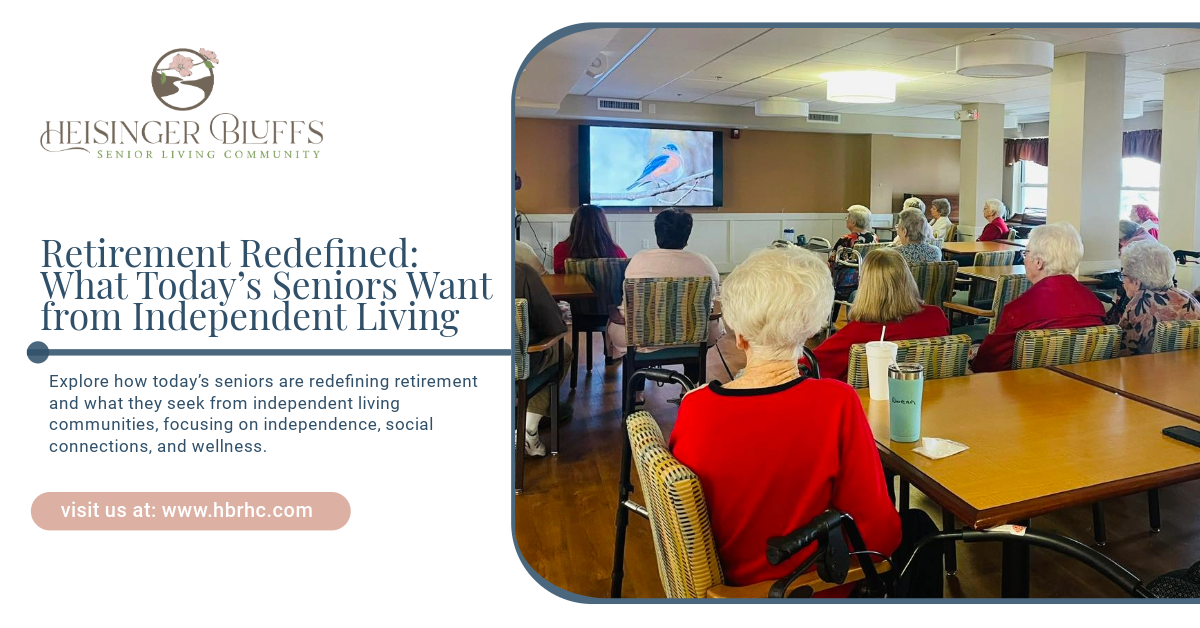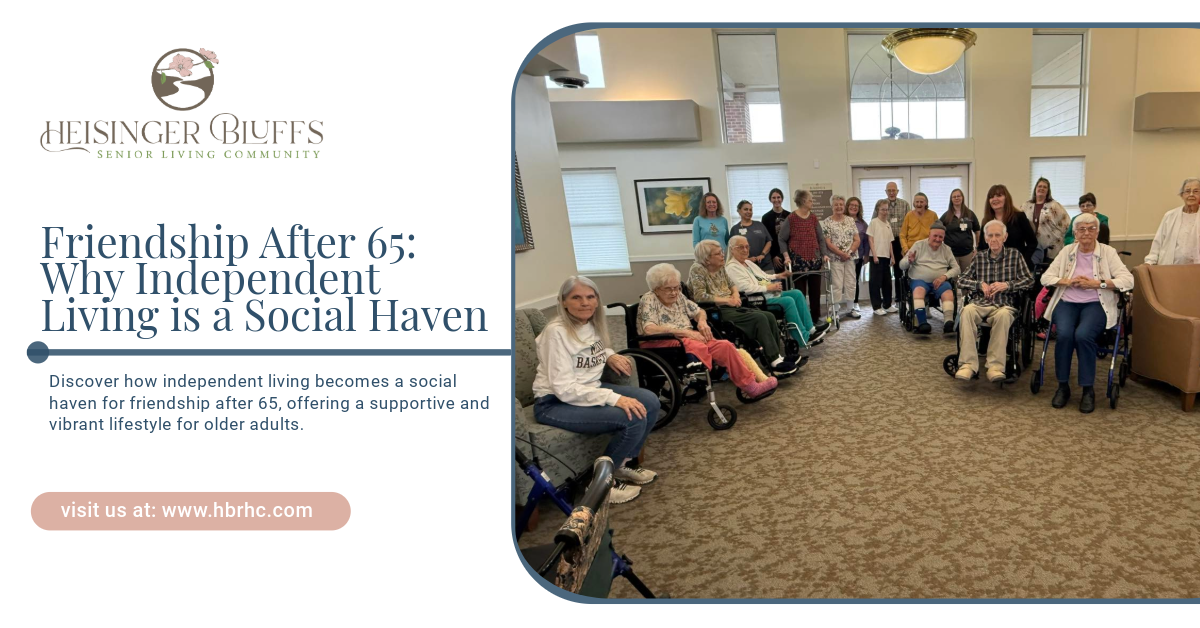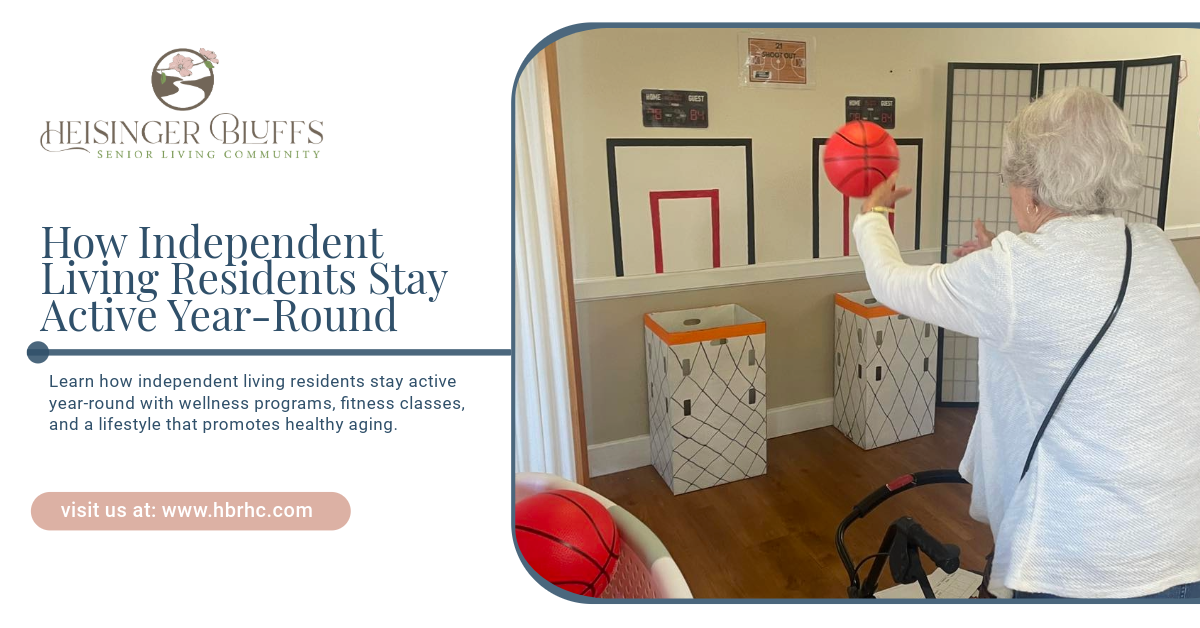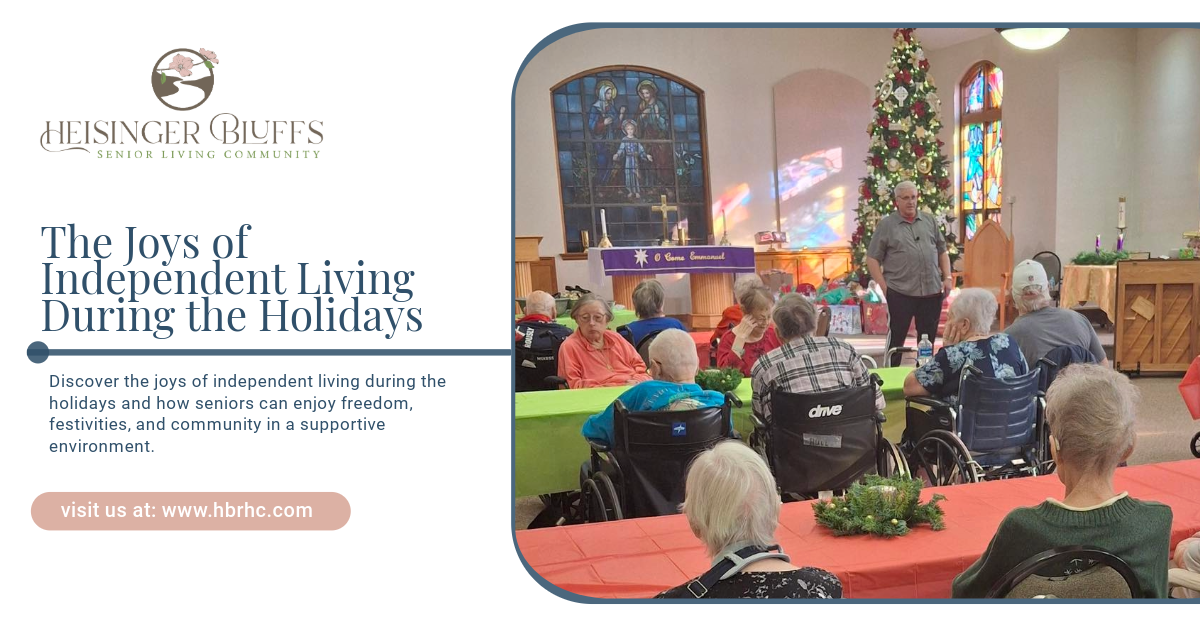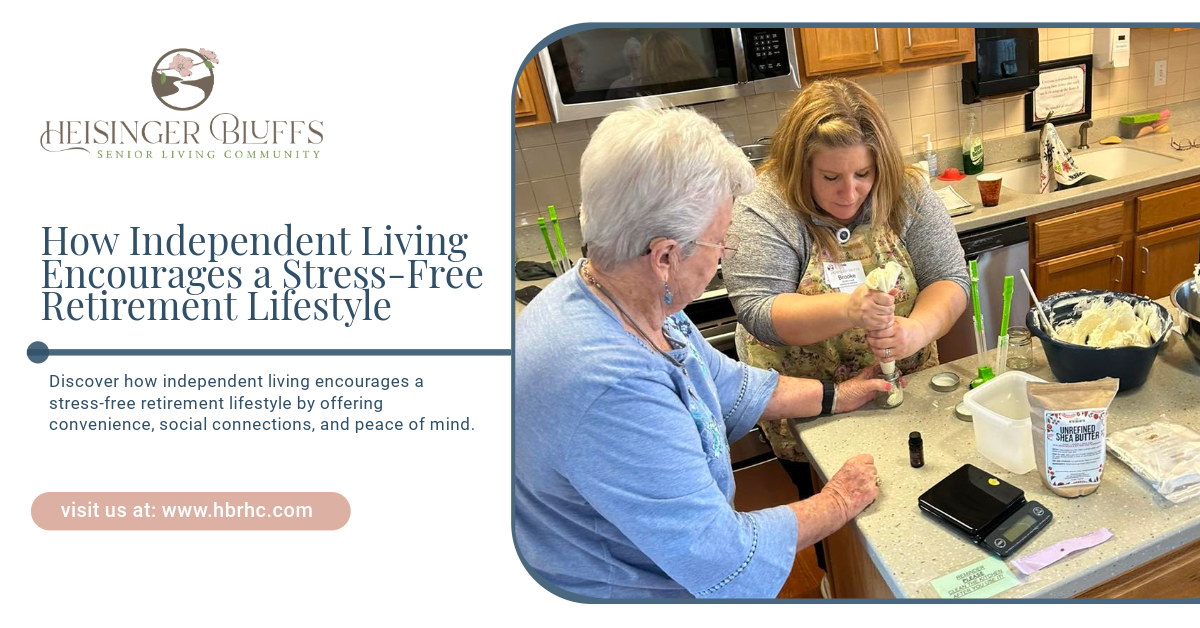Get in touch
What to Look for in a Senior Living Community

Choosing the Right Senior Living Community
Choosing the right senior living community for your loved one is an important decision that can significantly impact their quality of life. With so many options available, it’s essential to know what to look for during your tour. A thorough tour provides valuable insights into the level of care, safety, and overall experience that a senior living community offers. This guide will help you navigate your visits, highlighting the most critical factors to consider.
Whether you’re exploring independent living, assisted living, or memory care options, knowing what to expect can ensure you find a community that fits your loved one’s needs and preferences.
Things to Look for During a Senior Living Community Tour
1. The Atmosphere: First Impressions Matter
As you walk into a senior living community, take note of the atmosphere. First impressions can provide you with an immediate sense of whether the community will be a good fit. Here’s what to observe:
- Cleanliness: The community should be well-maintained and clean. Pay attention to common areas, hallways, and dining areas. Cleanliness is not only about appearances but also about how well-managed the facility is.
- Comfort: Check if the living spaces, common areas, and outdoor spaces are comfortable, welcoming, and suited to residents’ needs.
- Odors: While odors can sometimes be present in healthcare facilities, chronic unpleasant smells could indicate a lack of proper sanitation.
- Noise level: Pay attention to the noise level. Some noise is expected in busy areas, but constant loud noises could be disruptive for residents.
- Layout and design: Consider whether the facility is easy to navigate, especially for those with mobility issues or cognitive impairments. Wide hallways, well-marked signs, and accessible rooms are important for safety.
2. The Staff: Observing Interaction and Engagement
Staff play a pivotal role in the quality of care and daily life at any senior living community. During your tour, take time to observe how the staff interacts with residents and each other. The following points are critical:
- Friendliness and professionalism: Are staff members warm, friendly, and patient when speaking with residents? Do they appear approachable and genuinely engaged in their work?
- Resident-staff ratio: Inquire about the staff-to-resident ratio, particularly in assisted living and memory care units. A higher staff ratio ensures that each resident gets the attention they need.
- Longevity of staff: High staff turnover can be a red flag. Communities with long-term staff members typically indicate a positive work environment and better continuity of care.
- Caregiver qualifications: Ask about the qualifications and ongoing training of caregivers, particularly in specialized areas like memory care. Well-trained staff will provide better support for residents with specific health needs.
- Resident engagement: Do the staff interact with residents in meaningful ways? Look for signs of connection and care, rather than just task-based interaction.
3. Care Options: Ensuring Personalized and Appropriate Support
Senior living communities offer various levels of care, so it's important to understand the type of care your loved one will receive. Here’s what to ask:
- Levels of care offered: Does the community offer a range of care options, from independent living to assisted living to memory care? Having multiple levels of care can ensure your loved one doesn’t need to move to a new facility as their needs change.
- Personalized care plans: Ask how the community develops and implements care plans. Care should be tailored to each resident’s unique needs, with input from families, residents, and medical professionals.
- Medical services: Inquire about the availability of on-site medical staff, such as nurses or visiting doctors. If your loved one requires specific medical care, ensure the community can meet those needs.
- Medication management: For residents who need assistance with medications, ask how the community manages this service. Well-organized medication management is crucial for health and safety.
- Memory care options: If your loved one has dementia or Alzheimer’s, explore whether the community has specialized memory care units. These should be secure, with specially trained staff and activities designed to support cognitive health.
4. Amenities and Activities: Enhancing Daily Life
An essential part of life in a senior living community is the availability of amenities and activities that promote social engagement, physical activity, and mental stimulation. Consider the following:
- Dining options: Ask to see the dining area and inquire about the meal options. Are meals tailored to residents’ dietary needs and preferences? Can residents choose from various menu items? Dining should be a pleasant and social experience, with nutritious meals offered.
- Activity calendar: Review the community’s activity schedule. Are there a variety of activities that cater to different interests and abilities? Activities should promote socialization, physical exercise, and cognitive engagement, such as fitness classes, games, crafts, outings, and educational programs.
- Outdoor spaces: Explore the availability of outdoor areas like gardens, walking paths, or courtyards. Access to safe, well-maintained outdoor spaces can enhance residents’ quality of life by providing a place for relaxation and fresh air.
- Transportation services: If your loved one is still able to go out, ask about transportation options for appointments, shopping, or social outings. This can be an important factor for residents who like to maintain independence.
5. Safety and Security: Protecting Your Loved One’s Well-Being
Safety is a top priority in any senior living community. During your tour, evaluate the safety measures in place to protect residents:
- Security features: Look for secure entrances, well-lit areas, and emergency call systems in resident rooms and common areas. Ask about the protocols in place for emergencies like fire, medical issues, or intruders.
- Fall prevention: Falls are a common concern for seniors. Make sure the community has appropriate measures in place, such as non-slip flooring, grab bars in bathrooms, and accessible design features.
- Staff availability: Are staff members available 24/7 to respond to emergencies? Having staff on-site at all times ensures residents have access to help when needed.
- Secure memory care units: If your loved one is living in a memory care unit, ensure the space is secure and designed to prevent wandering, with alarms and monitoring systems in place.
6. Socialization Opportunities: Fostering Connection and Community
Maintaining an active social life is important for emotional and mental well-being. During your visit, assess how the community fosters connections among residents:
- Common areas: Are there inviting common areas where residents can gather and socialize? Comfortable lounges, game rooms, or libraries can encourage socialization.
- Group activities: Does the community offer group activities that promote interaction, such as group exercises, social events, or religious services? These opportunities can help your loved one build relationships and stay engaged.
- Family involvement: Ask about opportunities for family involvement, such as visiting hours, family events, or family support groups. Staying connected with loved ones can provide additional emotional support.
7. Cost and Contracts: Understanding the Financials
Understanding the cost structure and contract terms is crucial when selecting a senior living community. Here’s what to clarify:
- Monthly fees: Ask about the base monthly fee and what services are included. Be clear about which services, such as meals, housekeeping, or transportation, may require additional fees.
- Fee increases: Inquire about how often and by how much fees are likely to increase. Understanding the community’s pricing policy will help you plan for the future.
- Payment options: Discuss the types of payment the community accepts, such as private pay, long-term care insurance, Medicaid, or Medicare.
- Contract terms: Review the contract carefully. What is the notice period if your loved one needs to move? Are there any penalties for early termination?
8. Resident Satisfaction: Listen to Residents and Families
One of the best ways to gauge the quality of a senior living community is by speaking directly with current residents and their families. During your tour, take time to chat with residents and ask about their experiences:
- Resident satisfaction: Are residents happy with the care they receive? Do they feel safe and comfortable? Are there any concerns about staff responsiveness or the quality of services?
- Family feedback: Families of current residents can offer valuable insight. Ask how they feel about the level of care their loved one receives, the communication from staff, and how issues are handled.
9. Licensing and Accreditation: Verifying Standards of Care
Finally, ensure the community is properly licensed and meets state regulations for senior living communities. You can check this with your state’s Department of Health or similar regulatory body.
- Accreditation: Communities accredited by recognized organizations, such as the Commission on Accreditation of Rehabilitation Facilities (CARF), often meet higher standards of care.
- Inspection reports: Ask to see the community’s most recent inspection reports or check online to verify there are no major violations or concerns.
Final Thoughts
Touring a senior living community is a crucial step in finding the best fit for your loved one’s needs. By paying close attention to these key factors—atmosphere, staff, care options, amenities, safety, socialization, and financials—you can make an informed decision that supports your loved one’s well-being, comfort, and happiness.
At Heisinger Bluffs, we understand the importance of finding a community that feels like home. We invite you to tour our facility, meet our dedicated team, and see how we prioritize quality care and resident satisfaction every day.
Frequently Asked Questions
What questions should I ask during a senior living tour?
When touring a senior living community, ask about the staff-to-resident ratio, the types of care available (independent living, assisted living, memory care), activities offered, dining options, safety protocols, and how personalized care plans are created. Also, inquire about the costs, fee increases, and contract terms.
How do I know if a senior living community is right for my loved one?
The right senior living community should offer a comfortable, clean, and welcoming environment with friendly, qualified staff. Make sure the level of care matches your loved one’s needs, and that there are plenty of social activities, safety measures, and personalized care plans. Speaking with current residents and their families can also provide insight.
What should I bring on a tour of a senior living community?
Bring a list of questions, a notepad for taking notes, and a loved one or trusted friend for a second opinion. Consider bringing a checklist to evaluate factors like cleanliness, staff interaction, care options, activities, and overall atmosphere. You might also want to ask for brochures or pricing sheets to review later.



Want to know more?
We will get back to you as soon as possible.
Please try again later.
You May Also Like To Read
Heisinger Bluff’s Life Plan Community is here to make your senior years safe, stimulating and enjoyable so that you can savor the present, knowing the future will be taken care of.
QUICK LINKS
CONTACT
©2024. Heisinger Bluffs. All rights reserved.


